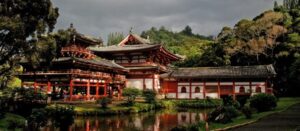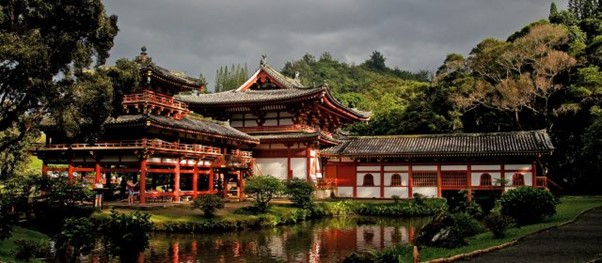The Japanese Diaspora
The Japanese diaspora has a very rich and unique history despite being a very recent phenomenon. Japan was notably one of the most isolated countries on the planet up until the Meiji period at the end of the 18th Century, which saw the political system transition from feudalism into a more democratised form of rule. Countries with the highest Japanese populations are Brazil (1.8 million), the United States (1.5 million), the Philippines (200,000), China (127,000) and Canada (109,000).
The history of the Japanese diaspora in the United States is complex and mired in deep controversy. The Japanese first arrived in the US towards the end of the 19th Century during the Meiji Restoration. Prior to this, Chinese immigrants had been a major presence throughout the country as labourers. However, the racist Chinese Exclusion Act, passed in 1882, was implemented, putting an end to Chinese immigration to the United States. The demand for cheap, foreign labour remained high and Japanese workers soon filled up the vacuum left by Chinese migrants.
Japanese workers settled mainly in Hawaii and the West Coast due to the relative proximity. Hawaii remains the most significant population hub of Japanese immigrants, who encompass over 30% of the state’s population. California was and is today the most significant Japanese population hub in the American mainland. Initially settling in San Francisco, racial tensions and the 1906 Earthquake saw the majority of the population leave for Los Angeles. Japanese children were barred from attending public schools in San Francisco while the earthquake proved to be economically devastating to the Bay Area. Seeking more opportunities, the community arrived in Los Angeles, where a major community grew over the next few decades. Immigration stopped as restrictions against Japanese immigration were enacted. The Gentlemen’s Agreement of 1907 prevented the immigration of unskilled workers while the Immigration Act of 1924 prevented the immigration of non-whites, including the Japanese.

Byoodo-In Temple, Hawaii, Bernard Spragg, Flickr Creative Commons
The Japanese population in the United States therefore remained fairly stagnant for many decades, with enclaves in Hawaii and the West Coast consolidating and slowly expanding. Upon the outbreak of the Second World War, the Japanese American population suffered a considerable injustice. With the escalation of tensions between the United States and Japan following the bombing of Pearl Harbour in 1941, President Franklin D. Roosevelt issued Executive Order No. 9066, which saw the Japanese and Japanese American population forcibly evicted from their homes and incarcerated in internment camps. This remains a dark chapter in American history and had a significant effect on the Japanese community, causing significant population displacement. Following the end of the Second World War, the Japanese community returned to their homes but resettled in more suburban regions.
The Japanese population in Latin America represents a hugely significant ethnic minority across a number of different countries. Indeed, the Japanese population in Brazil, numbering at 1.8 million, is the largest Japanese diaspora in the world. Japanese immigrants began settling in Brazil at the beginning of the 20th Century shortly following a treaty between the two countries. The end of feudalism had caused significant poverty within Japan’s rural areas, which sparked mass immigration abroad to the United States and elsewhere. However, racially-motivated immigration laws in the United States and other developed countries such as Australia hindered opportunities overseas. Brazil and other Latin American countries presented a viable alternative, with Brazil being the leading exporter of coffee.
Many Japanese migrants experienced significant prejudice in Brazil, coping with a considerable culture shock as well as the remnants of a brutish slavery culture. Japanese communities experienced trouble assimilating and often kept to themselves. Just prior to the Second World War, the Brazilian government introduced forced assimilation policies, which only exacerbated issues between the two cultures.
Despite these cultural tensions, Japanese assimilation did eventually occur as the 20th Century progressed. Many immigrants became successful in the agricultural industries, and their work ethic drew the respect of Brazilians. Furthermore, as Japan cultivated an international image of prosperity in the latter half of the 20th Century, this translated positively to the population in Brazil and eased assimilation efforts. The Japanese population grew and remains one of the highest foreign immigrant groups in the country. Cultural exchanges between the two have become clear in recent decades, with the popularity of martial arts and Japanese cuisine a clear sign of the synergy. Sao Paolo has the largest Japanese population outside of Japan, with 693,000 residents.

Domingo na Liberdade, Sao Paulo’s Japanese Neigbourhood, Felipe Tofani, Flickr Creative Commons
Sizeable Japanese communities exist in a number of other Latin American countries, most notably Peru and Mexico. These exist, as with the case of Brazil, due to the immigration restrictions to countries such as the United States and Australia as well as the wealth of agricultural labor opportunities. Enclaves exist within European countries such as the United Kingdom, France and Germany. These are generally rather small and scattered communities, a notable exception being the Japanese community in the German city of Dusseldorf, which is very close-knit.
Despite centuries of cultural and political isolation, the Japanese diaspora has spread far and wide throughout the world over a relatively short period of time. Over the course of a little over a century, Japan’s cultural influence has resonated throughout the world without losing its core, unique values.
main image: Japanese American National Museum in the historic Little Tokyo district in Los Angeles.




